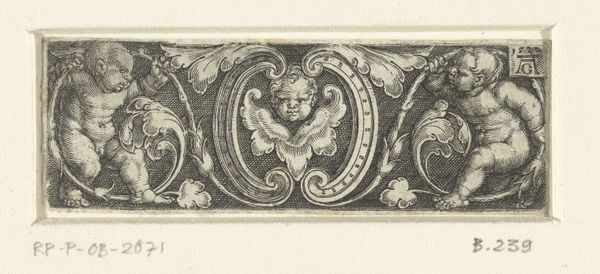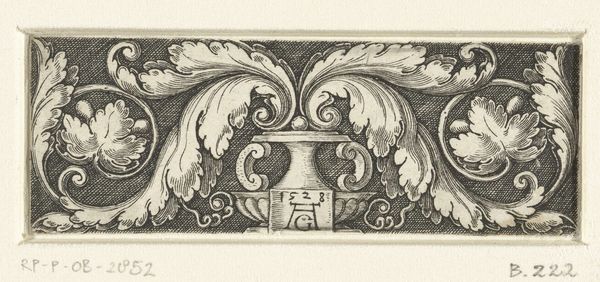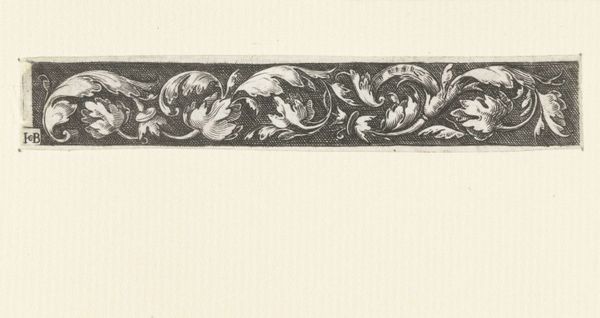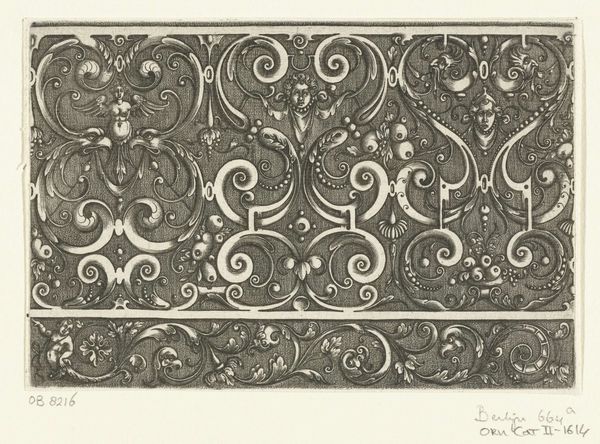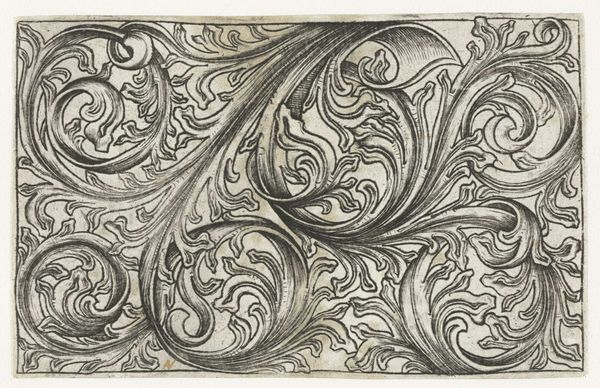
drawing, print, intaglio, ink, engraving
#
drawing
# print
#
intaglio
#
11_renaissance
#
ink
#
italian-renaissance
#
engraving
Dimensions: height 17 mm, width 97 mm
Copyright: Rijks Museum: Open Domain
Curator: Look at this intricate little piece! It's called "Twee dubbele voluten," and we think it’s from somewhere between 1500 and 1600. The artist, as of yet, remains unknown. Editor: My first impression is just…wow, that is delicate. It looks like a whispered secret from another age. All those swirling lines and shaded areas! The amount of detail is fascinating. Curator: It's an engraving, you see, an intaglio print. The design has been cut into a surface – probably metal – and then inked and printed. It's quite a skill, really, to get this level of refinement. You almost feel that it has that movement of illuminated manuscripts. Editor: Thinking about its time… this sort of ornamental print likely found its way onto furniture, bookbindings, perhaps even weapons. Ornament as power and prestige. Considering how such decoration reinforced hierarchy, I can’t help wonder if this scrollwork might seem a little less "innocent" now than it was meant to at the time. Curator: Interesting thought. Perhaps a question we need to continually pose about decoration! However, on the pure craft front, I would love to examine how the engraver manipulated the burin to get such subtly curving lines. The floral details almost feel alive. Editor: It's easy to lose oneself in the botanical details—the acanthus leaves, stylized flowers—but that central urn reminds me how potent symbols of wealth and order could be deployed in domestic settings. So maybe the question here is: How can this kind of imagery become a tool for empowerment? How does decoration reflect—or create—social order? Curator: Maybe, the decoration became a form of empowerment as many people could now make something look richer or "of class" for an affordable price. And if we can do this with craft... what does it mean now, after all these years? Is it nostalgia for a certain artistry or still trying to give power to an individual? Editor: Indeed. Its endurance through time has something powerful to suggest— perhaps about how we find beauty amidst history, still?
Comments
No comments
Be the first to comment and join the conversation on the ultimate creative platform.
